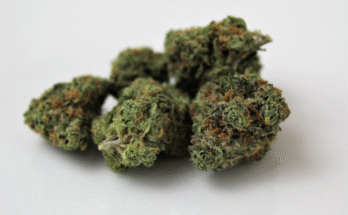Two of the most well-known endocannabinoids, anandamide and 2-AG, were discovered in the early 90s, but scientists from San Diego think they’ve found another.
The recent study published in Scientific Reports found that this new endocannabinoid, Pentadecanoylcarnitine (PDC), is synthesised in the body from another fatty acid, pentadecanoic acid (C15:0).
It has been found that PDC binds with CB1 and CB2 receptors and may be beneficial for the physiological processes of the regulation of pain, mood, inflammation, and sleep.
Authors of the study say that “PDC has broad dose-dependent antiproliferative and anti-inflammatory activities, and it is also a full-acting endocannabinoid with pleitropic activities relevant to physical and mental health.”
What is an endocannabinoid?
In the brain and body, there are a high number of receptors that make up the endocannabinoid system (ECS). These receptors act like traffic controllers by regulating the levels and activity of many bodily functions.
To activate these receptors, our bodies produce molecules called endocannabinoids (‘endo’ meaning ‘within’). They have a similar structure to cannabinoids such as THC and CBD that are produced by the cannabis plant, which is why they were named after them.

The first endocannabinoid to be discovered was named anandamide after the Sanskrit word ananda, which means ‘bliss’.
THC and anandamide both have a strong affinity for binding with the CB1 receptor. The activation of the CB1 receptor is responsible for the ‘high’ that’s associated with cannabis as well as the runner’s high one gets after exercise.
CB2 receptors are mostly located in our immune tissues and they help regulate our immune system, including inflammation levels.
Endocannabinoids are are synthesised in our body from arachidonic acid, which is an omega-6 essential fatty acid.
We obtain fatty acids from meat, fish, eggs, and milk. Or they can be converted from linoleic acid (another omega-6) which can be found in seeds, nuts, and refined vegetable oils.
How Pentadecanoylcarnitine was found
The companies involved were the US Navy Marine Mammal Program, Epitracker (a drug-discovery company), and Seraphina Therapeutics, which is a spinoff company of Epitracker.
Researchers began studies on the biological effects of key C15:0 metabolites.

They started by analysing previously gathered blood tests from dolphins which had been fed a modified diet in order to identify certain compounds whose levels rose in conjunction with the increase in fatty acid consumption.
Six months later, PDC was found to be the number-one most associated with elevated C15:0 intake.
Scientists then tested PDC on human cell systems with varied disease states to see if it had any direct effect.
Future potential
It was found that PDC may have dose-dependent anti-inflammatory activities in five of the cell systems. More importantly, these systems are considered to be clinically relevant in treating immune, tumour-related, cardiovascular, pulmonary, and skin diseases.
Authors said more research is needed to look deeper into PDC and its properties in the endocannabinoid system.
It has only been mentioned a handful of times in scientific studies, but scientists would welcome further studies to evaluate the possible links between the global rise in allergies, mental health conditions, sleep disorders, and C15:0 nutritional deficiencies.
Sources: Nature, Project CBD
Read: 18 Scientifically Proven Ways To Enhance Your Endocannabinoid System
Sign up to our weekly newsletter for more cannabis news, reviews and insider tips…




